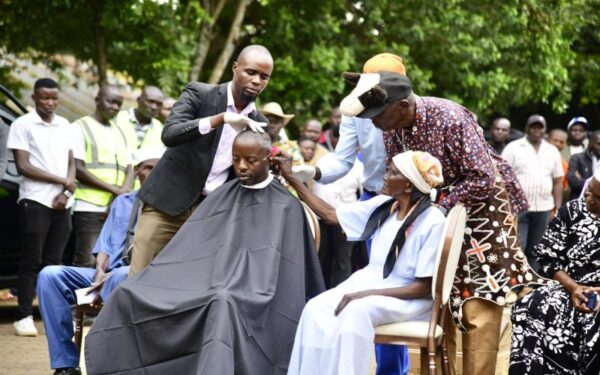Bondo, Kenya — October 24, 2025
Three days after the burial of former Prime Minister Raila Odinga, his family home in Bondo was once again alive with the sound of drums, song, and quiet ceremony. This time, it was not for mourning but for continuity.
On Thursday, his surviving son, Raila Odinga Jr, was formally installed as the new head of the Odinga family in a deeply symbolic Luo ritual known as liedo — a ceremony that marks both the end of mourning and the beginning of new leadership within the homestead.
A Ceremony of Renewal
The ritual unfolded at the family’s Opoda Farm, where elders and relatives gathered in the compound surrounded by dancers and singers performing traditional Luo rhythms. The air carried both reverence and renewal — a visible bridge between grief and the future.
“This is our way of closing the chapter of mourning and opening another — one that ensures the home continues in peace,” said one elder who attended the event.
According to Luo customs, liedo is performed about four days after the burial of a patriarch. It involves the shaving of the deceased’s children and widow — an act meant to symbolically cleanse the family of death’s shadow and usher in new beginnings.
Why the Shaving Matters
Traditionally, the shaving would take place beside a river or lake, where the water served as a cleansing symbol to wash away the past. In modern times, however, many families perform the ritual at home, maintaining its spiritual essence even as practices evolve.
During the ceremony, the family’s eldest woman — often a grandmother — shaves the heir’s head in three symbolic strokes before completing the act. It is a gesture steeped in meaning: humility before ancestry, acceptance of responsibility, and renewal of family authority.
In this instance, the ritual placed Raila Odinga Jr at the centre. His ascension follows the death of his elder brother, Fidel Odinga, in 2015 — a loss that made him the next in line to assume leadership within the Odinga household.
The Moment of Transition
After the shaving, Raila Jr was handed a spear and shield, the traditional emblems of protection and authority. He then joined dancers in a brief performance — a moment both joyous and solemn — marking his official recognition as the new head of the family.
The gesture carries weight in Luo culture. It grants him the right to speak on behalf of the family in wider clan gatherings, to defend its interests, and to preserve the legacy of his lineage.
Dr Oburu Odinga, Raila’s elder brother, who was present at the ceremony, later remarked that while traditions evolve, their meaning endures. He noted that some elements, such as the shaving of spouses, may be reconsidered in modern contexts.
“Every generation interprets these customs differently,” he said. “But what remains constant is the respect for continuity, for family, and for the ancestors.”
Honouring the Past, Anchoring the Future
Even after such rites, remembrance continues. Families are expected to maintain the graves of their elders, offering songs, food, and prayers on anniversaries or major family gatherings. These acts, like the liedo, sustain the bond between the living and the departed.
In Luo belief, death is not an ending but a passage. The departed are thought to join the world of ancestors — juok — who watch over the living. Through ceremonies like this, families reaffirm that those who have gone before remain part of their story.
At Opoda Farm, that connection was palpable — a union of past and present. The elder statesman’s life was being honoured not only through memory, but through tradition itself.
As the drums faded into the afternoon light, the meaning of the day was clear: one chapter had closed, another had begun — guided by the same rhythms that have bound Luo families for generations.

